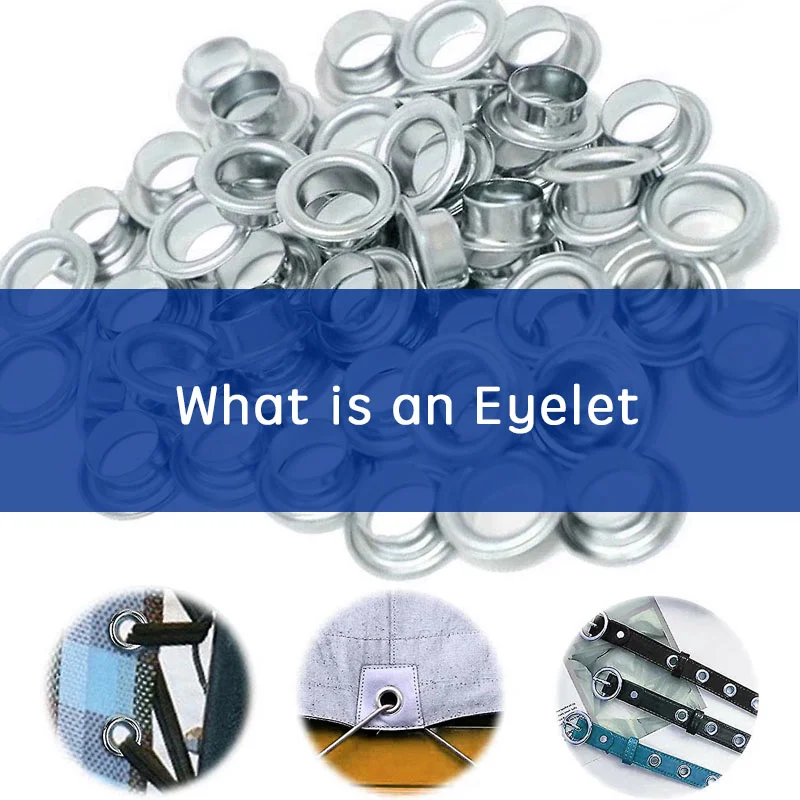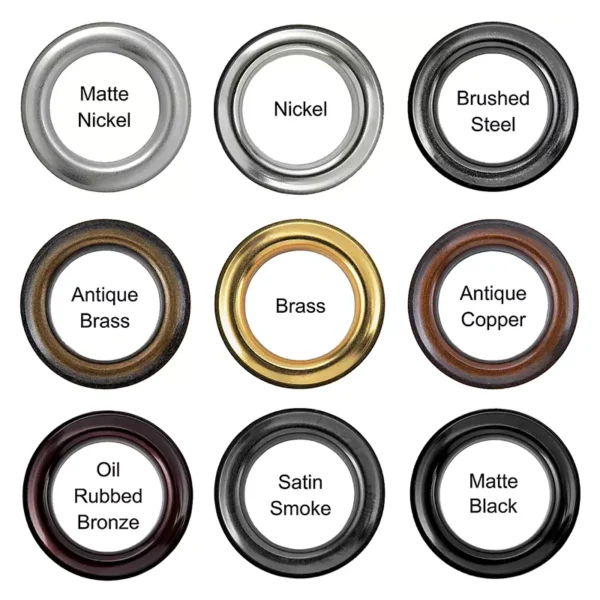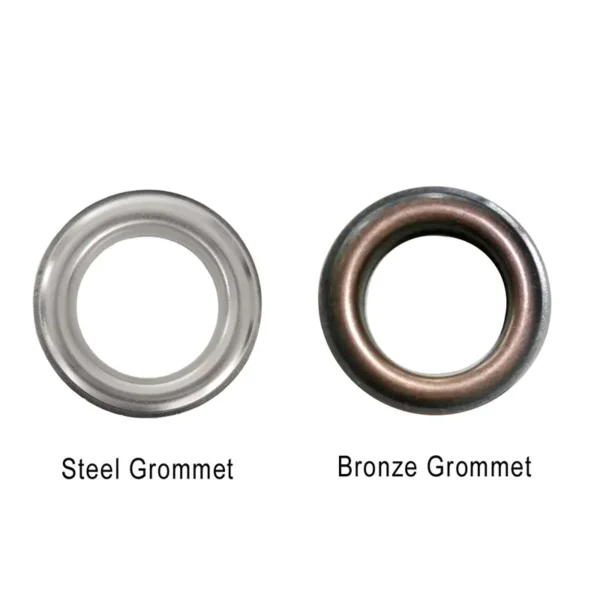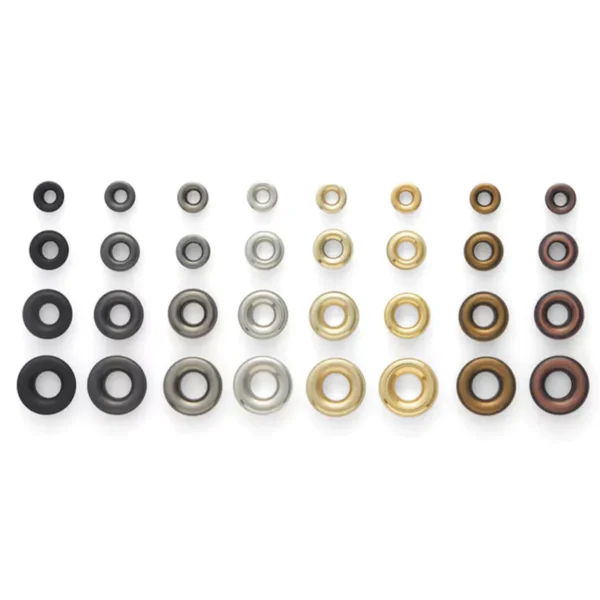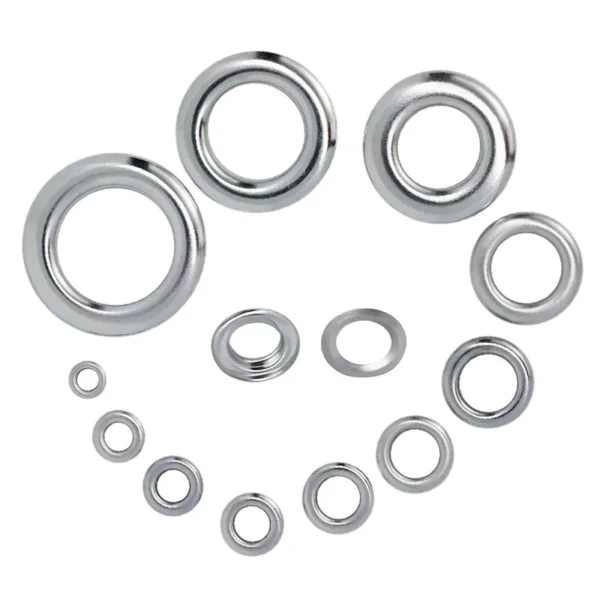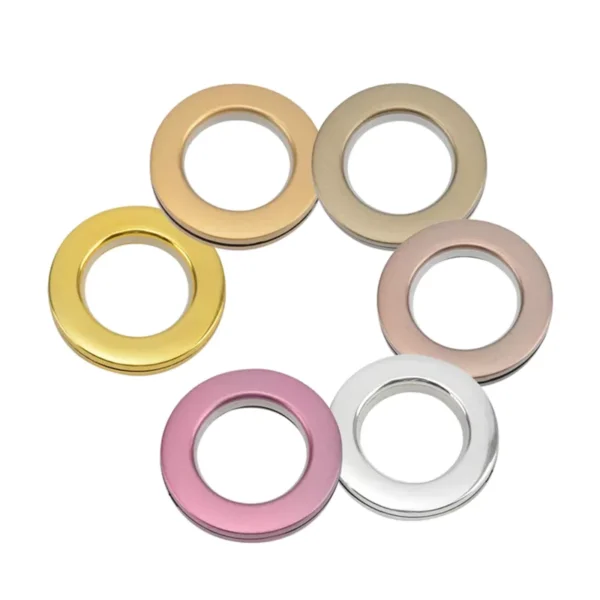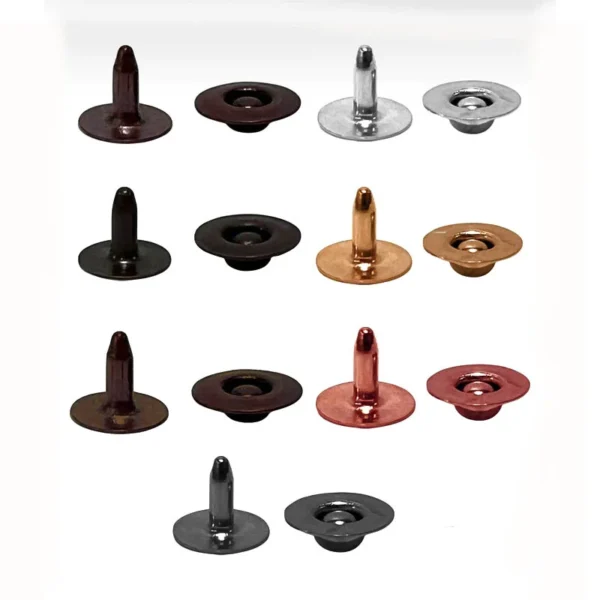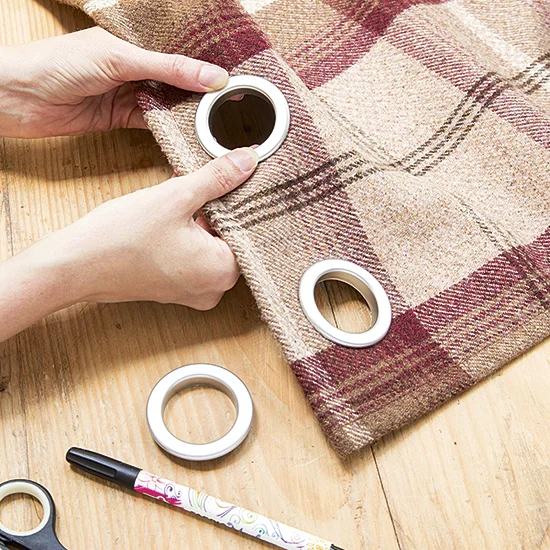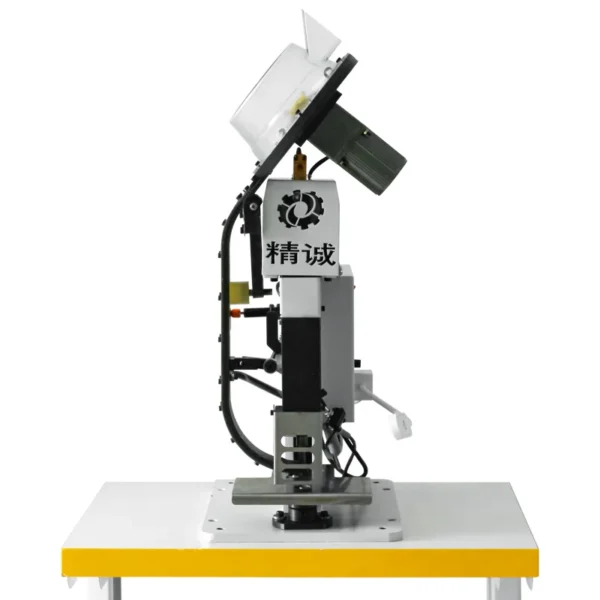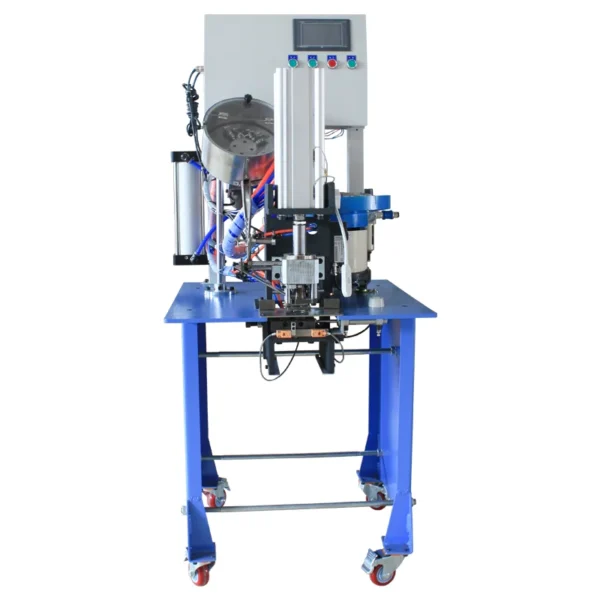What is an Eyelet, An eyelet is a small hole or perforation that is typically reinforced with a metal or plastic ring. These rings, also called grommets when they are larger, are inserted into the holes to prevent tearing and provide structural strength. By Eyelet Punching Machine Eyelets are used in a variety of applications, including fashion, footwear, industrial uses, and crafts.
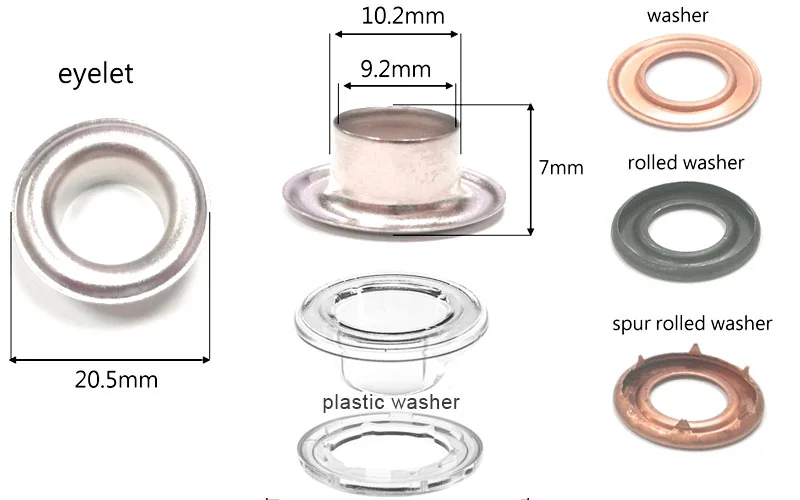
Principle of Eyelets
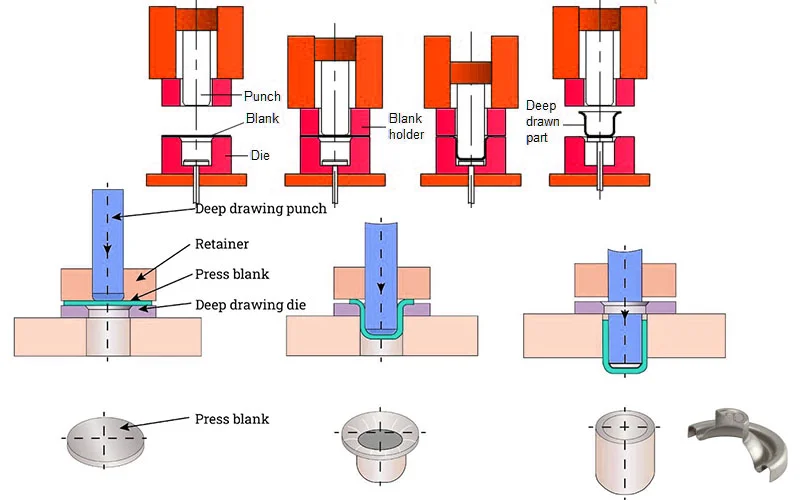
What is an Eyelet, Eyelets can be used to reinforce a hole or shield an object from the sharp edges of a hole. These gadgets often use fabrics, sheet metal, and other thin fibrous materials. Without eyelets, thinner fabrics are more likely to break, but they also reduce the risk of abrasion and other damage.
From enhancing the durability of shoelaces to providing ventilation in fabrics, eyelets are versatile components. They are crucial in fields such as fashion design, automotive manufacturing, and even in DIY projects. Understanding the various types and uses of eyelets can help in selecting the right one for specific needs.
Manufacturing Process of Eyelets
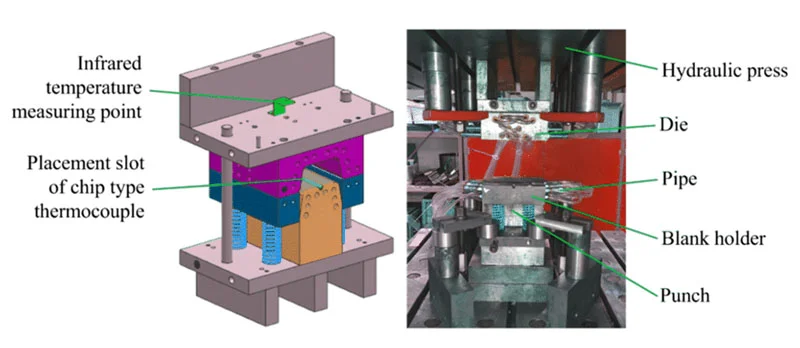
In-depth study of the eyelet production process, we can better understand what is an eyelet.
Material Selection and Preparation
Raw Material: Eyelets are typically made from materials such as brass, stainless steel, aluminum, or plastic.
Sheet Preparation: The chosen material is procured in sheet or coil form. For metal eyelets, sheets are usually coated to prevent corrosion and provide a smooth finish.
Cutting and Stamping
Blanking: The metal sheet is fed into a blanking press, which cuts out flat circular blanks that will form the eyelets.
Stamping: The blanks are then stamped to create the initial eyelet shape. This involves forming the barrel (the cylindrical part) and the flange (the flat ring around the hole).
Drawing and Forming
Deep Drawing: In this step, the blanks are subjected to a deep drawing process, which involves pulling the metal into a die to form the deep cylindrical shape of the eyelet.
Piercing: A piercing punch creates the central hole in the eyelet during this process.
Trimming and Sizing
Trimming: Excess material from the deep drawing process is trimmed to achieve the precise dimensions required.
Sizing: The eyelets are resized to ensure uniformity in diameter and shape, maintaining tight tolerances.
Heat Treatment (for Metal Eyelets)
Annealing: Metal eyelets may undergo annealing, a heat treatment process that softens the metal, enhancing ductility and reducing internal stresses.
Surface Treatment
Plating: Metal eyelets often receive surface treatments such as electroplating (zinc, nickel, etc.) to enhance corrosion resistance and appearance.
Painting or Coating: Plastic eyelets may be painted or coated for aesthetic purposes or to provide additional protection.
What is an Eyelet: Types and Categories
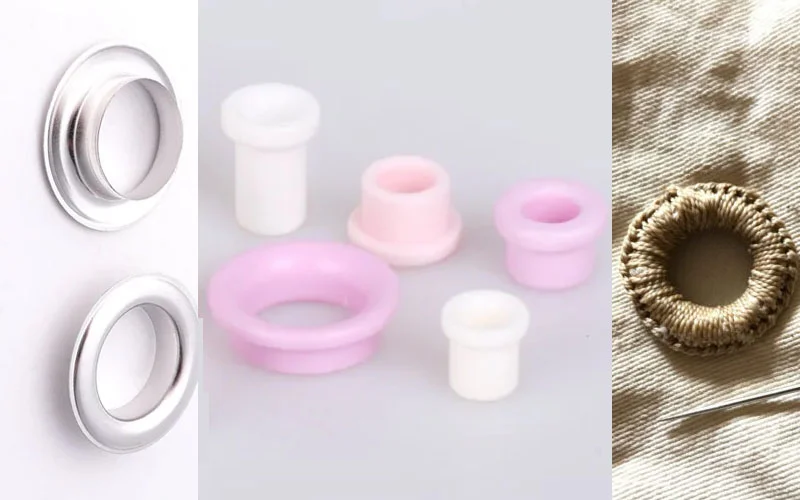
Classification Based on Material
Metal Eyelets
Metal eyelets are commonly made from brass, aluminum, or stainless steel. They are known for their strength and durability, making them ideal for heavy-duty applications such as industrial use or outdoor equipment.
Plastic Eyelets
Plastic eyelets are lightweight and resistant to corrosion. They are often used in applications where weight is a concern, such as in lightweight clothing or accessories.
Fabric Eyelets
Fabric eyelets, also known as embroidered eyelets, are typically found in garments and crafts. They are integrated into the material through stitching, providing both decorative and functional benefits.
Eyelets: Classification Based on Size
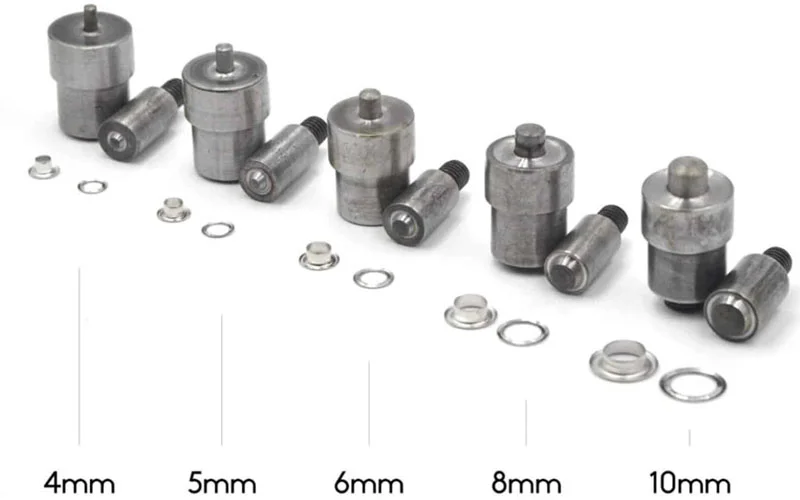
Small Eyelets
Small eyelets are used in delicate applications like jewelry or fine clothing details. They add subtle reinforcement without overwhelming the design.
Medium Eyelets
Medium-sized eyelets are versatile and can be found in various applications, including shoes, bags, and apparel. They strike a balance between durability and aesthetic appeal.
Large Eyelets
Large eyelets are used in heavy-duty applications such as tarps, sails, and industrial coverings. Their size provides the necessary strength for high-stress uses.
Classification Based on Shape
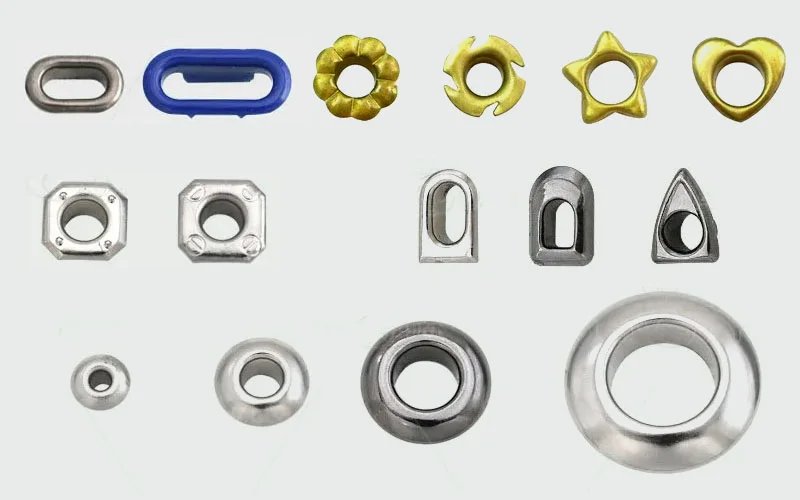
Round Eyelets
Round eyelets are the most common shape and are used in a wide range of applications. Their circular design provides an even distribution of stress around the hole.
Oval Eyelets
Oval eyelets are used in applications where an elongated hole is needed, such as in certain types of footwear or sports equipment.
Custom-Shaped Eyelets
Custom-shaped eyelets are designed for specific applications or aesthetic requirements. They can be found in designer clothing or specialized industrial equipment.
Eyelets Technical Specifications
What is an eyelet? After understanding the above content, let’s take a look at the industry’s standard requirements for eyelets.
Standard Dimensions
Eyelets come in a range of standard sizes, typically measured by their internal diameter and flange diameter. These dimensions are standardized to fit specific applications and tools.
Material Specifications
Materials used for eyelets are chosen based on their intended use. Common materials include metals like brass and stainless steel for durability and strength, and plastics for lightweight applications.
Durability and Strength
The durability and strength of eyelets depend on their material and construction. Metal eyelets are generally more durable than plastic ones, but advancements in plastic technology have improved their performance in many applications.
What is an eyelet used for?
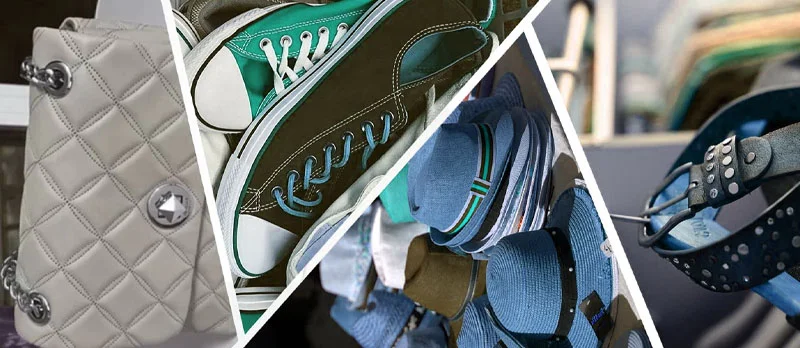
Eyelets in Fashion and Textiles
Use in Clothing
Eyelets are widely used in clothing for both functional and decorative purposes. They are often found in laced garments, corsets, and as accents on various fashion pieces.
Use in Accessories
Accessories like bags, belts, and hats frequently incorporate eyelets. They add durability and style, allowing for creative design possibilities.
Eyelets in Footwear
In footwear, eyelets are essential for reinforcing shoelace holes. They prevent fraying and tearing, ensuring the longevity of the shoe.
Eyelets in Industrial Applications
Automotive
In the automotive industry, eyelets are used in components like upholstery and coverings. They provide secure fastening points that can withstand vibration and wear.
Construction
In construction, eyelets are used in tarps, scaffolding covers, and other protective materials. They offer strong attachment points that can endure harsh conditions.
Eyelets in Craft and DIY Projects
For crafters and DIY enthusiasts, eyelets offer a way to add both function and flair to projects. They can be used in scrapbooking, fabric crafts, and handmade accessories.
Eyelets Benefits
Aesthetic Enhancement
Eyelets add a professional and finished look to various products. In fashion, they can transform a simple garment into a stylish piece.
Functional Benefits
Ventilation
Eyelets can provide ventilation in clothing, footwear, and equipment. This feature is particularly useful in athletic and outdoor gear.
Fastening
Eyelets serve as strong fastening points, allowing for secure attachment of laces, straps, or cords.
Durability Improvement
Reinforcing holes with eyelets significantly improves the durability of the material, preventing tears and extending the lifespan of the product.
Compared to its contemporaries, clear eyelets are more attractive. When those eyelets are positioned on the banner, their transparency prevents any interruptions. Unlike metal eyelets that need to be first removed from the banner, clear eyelets are less expensive and may be recycled when they are installed into PE or PP banners.
How to Install Eyelets?
Semi-automatic Eyelet Machine and Automatic Eyelet Punching Machine
What is an eyelet? Now that we have solved the problem, let’s learn how to install and use an eyelet through an Eyelet Punching Machine.
Step-by-Step Instructions:
Set Up the Machine:
Power Source: Ensure the machine is connected to a power source if it’s electric. For pneumatic machines, check the air compressor connection.
Load the Eyelets: Load the eyelets into the designated feeder or hopper. The machine manual will have specific instructions for loading eyelets, ensuring they are oriented correctly for feeding.
Adjust Settings: Set the machine’s parameters according to the eyelet size and material thickness. This may include adjusting the die height and pressure settings.
Prepare the Material:
Mark the spots on your material where you want the eyelets to be installed. Use a pencil, fabric marker, or any appropriate marking tool.
Position the Material:
Place the material in the machine’s working area. Align the marked spot with the punching die of the machine. Some machines come with an adjustable guide to help position the material accurately.
Activate the Machine:
Depending on the machine, this may involve pressing a button, stepping on a foot pedal, or using a hand lever. Ensure you follow the manufacturer’s instructions for operating the specific model of your machine.
The machine will punch the hole and set the eyelet in one automatic cycle. Ensure your hands are clear of the working area for safety.
Inspect the Eyelet:
Check the installed eyelet to ensure it is set correctly. The eyelet should be securely attached with the flange flat against the material and the barrel properly flared.
Make adjustments to the machine settings if the eyelet is not installed to your satisfaction (e.g., if it’s loose or not flaring properly).
Repeat the Process:
Move the material to the next marked spot and repeat the punching and eyelet setting process.
For large-scale production, continuously feed the material through the machine, ensuring proper alignment for each eyelet placement.
Maintenance Tips
Regular inspection of eyelets for signs of wear or damage is essential. Cleaning metal eyelets to prevent rust and ensuring that they remain securely fastened will prolong their life.
FAQs
what is an eyelet on a shoe?
An eyelet on a shoe is a small hole, typically reinforced with a metal or plastic ring, through which shoelaces are threaded. Eyelets are positioned along the sides of the shoe’s upper part, allowing the laces to be tightened and secured, thereby ensuring the shoe fits snugly on the wearer’s foot. They play a crucial role in providing both support and adjustability for the shoe.
what is an eyelet dress?
An eyelet dress is a dress made from fabric with small, decorative holes, often in intricate patterns. These holes are created by embroidery, giving the dress a light and airy look. Eyelet dresses are popular for warm weather and have a feminine, summery style.
what is an eyelet on a shirt?
An eyelet on a shirt is a small hole, usually reinforced with stitching or a metal ring, used for decorative or functional purposes. It might be found on pockets, cuffs, or as part of the shirt’s design to add ventilation or style.
what is the difference between a grommet and an eyelet?
A grommet is larger and used for heavy-duty purposes like tarps and curtains. An eyelet is smaller and used for lighter applications like clothing and crafts. Both reinforce holes but differ in size and usage.
what is an eyelet curtain pole?
An eyelet curtain pole is a rod designed for curtains with eyelet or grommet headers, allowing them to slide smoothly for opening and closing.
Conclusion
Eyelets are versatile components with a wide range of applications in fashion, industry, and crafts. Understanding the different types, materials, and uses of eyelets can help in selecting the right one for any project.
Choosing the appropriate eyelet is crucial for ensuring the durability and functionality of the finished product. Factors such as material, size, and intended use should be carefully considered.
To learn more about eyelets and their applications, explore additional resources or consult with experts in the field. Whether you are a designer, engineer, or DIY enthusiast, there is always more to discover about this small but essential component.

